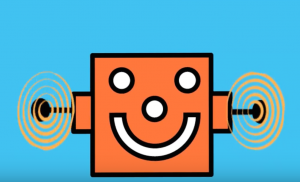Intro to Assistive Technology Video

This 5-minute video from the Center on Technology and Disability provides a brief overview of Assistive Technology and explains some of the major components. Chris Bugaj, an Assistive Technology Expert, presents information on Assistive Technology (AT). He reminds viewers that AT is something that is defined in the law (the Individuals with Disabilities Education Act or IDEA of 2004) and it needs to be considered at every IEP (Individualized Education Program) meeting.
Defining Assistive Technology
The definition of Assistive Technology is broken down into two parts: the AT device, and the AT service.
An assistive technology device is used to increase, maintain or improve the functional capabilities of a student with a disability.
The term includes:
-
Functional Evaluations
-
Can look at:
- reading, writing, and math skills.
-
Can also look at behaviors:
- self-regulation
- interacting with peers
- ability to transition between activities
-
Can look at:
- Purchasing, Leasing or otherwise providing for the acquisition of AT devices
- Selecting, desgning, fitting, customizing, adapting, applying, maintaining, repairing or replacing AT devices
- Coordinating and using other therapies, interventions or other services with AT devices
- Training or technical assistance for such a child or, where appropriate, the family of the child, or for professionals
An AT device is NOT a medical device, such as a shunt, a cochlear implant, or a pacemaker
Examples of AT
Assistive technology can be anything!
- Handheld devices, such as smartphones or tablets, Chromebook or laptop
- Controller or switch
- Weighted vest
- Low tech is also included, such as a slant board or folding a piece of paper in a certain way to help them better remember the content
